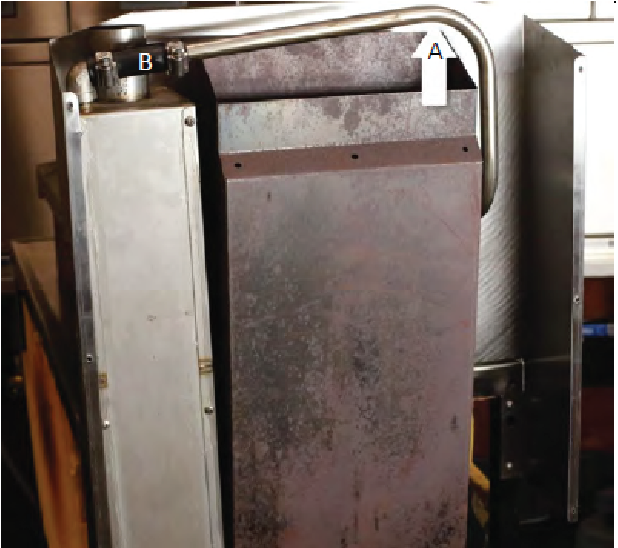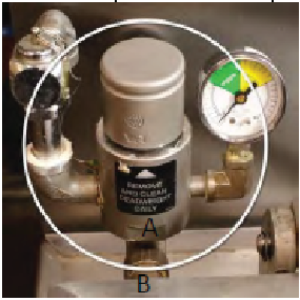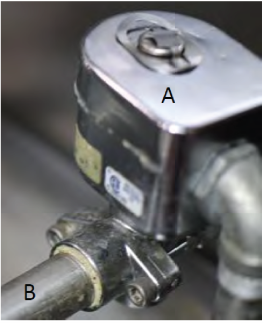Applies to:


Inspecting the Deadweight and Solenoid Plumbing
Some locations may choose to do this procedure on a more frequent basis (i.e., quarterly, semi-annually, or other frequency).
Inspect that the plumbing from the dead weight valve and the pressure solenoid are clean, and free from debris.
-
During the lid locking safety inspection if pressure exceeded 14 psi, this would indicate blockage in either the dead weight assembly or in the dead weight plumbing.
-
If pressure were slow to release at the end of the lid locking safety inspection, this would indicate that either the solenoid valve needs to be cleaned or there is an obstruction in the pressure solenoid plumbing.
Cleaning the Deadweight Plumbing
-
Remove rear cover of fryer.

-
Disconnect deadweight tube (A) from dead weight hose (B).
-
Disconnect the dead weight tube from the dead weight assembly by loosening the compression nut at the rear of the dead weight assembly.
-
Clean the dead weight tube.
-
Clean the dead weight valve using a small pipe snake.

-
Clean from the outlet in the vat (B) to the deadweight valve (A).
-
Reassemble in reverse order.
Cleaning the Solenoid Plumbing

-
Inspect and clean the plumbing from the outlet in the vat (B) to the pressure solenoid (A).
-
Clean from the solenoid to the condensation box, see instructions for removal and cleaning of the condensation box.
